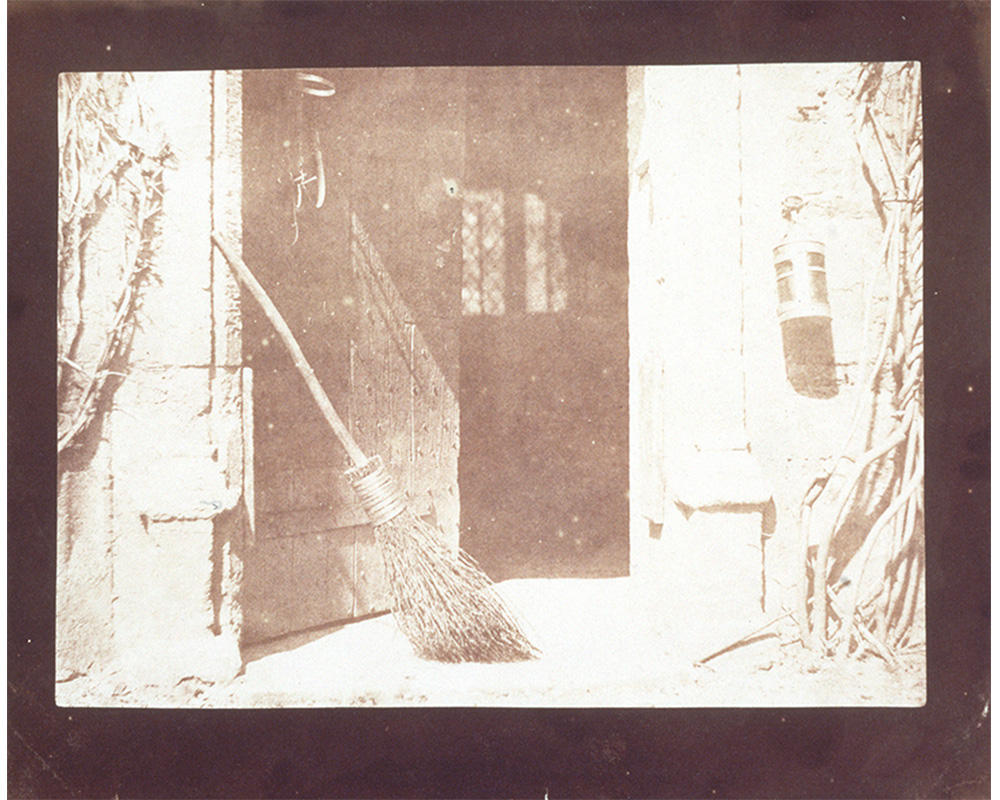
The Open Door
Amanda Shubert is the 2010-2012 Brown Post-Baccalaureate Curatorial Fellow at SCMA.
This photograph, The Open Door, is the oldest in our collection. William Henry Fox Talbot was the inventor of the negative-positive photograph, and one of the earliest practitioners (some say the inventor) of photography as we know it today. This is a plate from Talbot’s series The Pencil of Nature, the first publication to explain and illustrate the scientific and practical applications of photography.
The Open Door is among the most celebrated images from The Pencil of Nature. Maybe this is because it seems less “scientific and practical” than pictorial or aesthetic. The photograph is a subtle play on interior and exterior. The open door gives us a glimpse into an old barn that then gives us a glimpse back outside through two shuttered windows. The outside of the barn is suffused with light, the interior opaque with shadow. The broom leaning in the doorway in the foreground offsets the windows in the background. The calculated asymmetry of the image is perfectly picturesque.
To explain the picture, Talbot invoked the seventeenth century Dutch painters who were popularly hailed as masters of realism in Talbot’s time. “A painter’s eye will often be arrested where ordinary people see nothing remarkable,” he wrote.
The Open Door was hailed by the British press for its “microscopic execution that sets at naught the work of human hands.” As far as praise goes, I’m partial myself to Talbot’s mother’s description of the photograph: she called it the “soliloquy of the broom.” What would the broom be saying? Why does this picture seem so eloquent, so expressive, when all of its subjects (a broom, a barn, a hanging lantern) are mute?